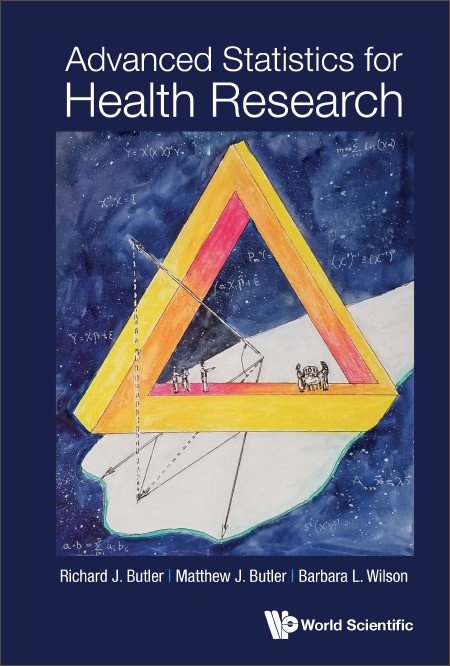System Upgrade on Tue, Oct 25th, 2022 at 2am (EDT)
Existing users will be able to log into the site and access content. However, E-commerce and registration of new users may not be available for up to 12 hours.For online purchase, please visit us again. Contact us at [email protected] for any enquiries.
Advanced Statistics for Health Research provides a rigorous geometric understanding of models used in the analysis of health data, including linear and non-linear regression models, and supervised machine learning models. Models drawn from the health literature include: ordinary least squares, two-stage least squares, probits, logits, Cox regressions, duration modeling, quantile regression and random forest regression. Causal inference techniques from the health literature are presented including randomization, matching and propensity score matching, differences-in-differences, instrumental variables, regression discontinuity, and fixed effects analysis. Codes for the respective statistical techniques presented are given for STATA, SAS and R.
Sample Chapter(s)
Preface
Chapter 20: Random Forest Regression Residuals and the Regression Gini Index
Contents:
- The First Day
- The Spreadsheet View of Data
- Multiple Regression — Beta Coefficients, Correlations, and Standard Deviations
- The Data-Generating Process and Scientific Inference
- Causal Inference Using Multiple Regressions
- Randomization and Friends
- Matching and Propensity Score Matching — "As if Randomized"
- Instrumental Variables
- Regression Discontinuity — A Sort of Instrumental Variable Technique
- Statistical Merging — Difference-in-Difference and Split-Sample Instrumental Variables
- Panel Dataset Analysis with Randomization
- Panel Dataset Analysis with Fixed Effects and Lags
- Panel Dataset Analysis with Generalized Methods of Moments (GMM), Possible Endogeneity with the Predictor Variables
- Logits, Probits, and Multinomial Logits
- Discrete Outcomes Continued: The Area Under the Curve Metrics, Count Models
- Cox Regression Models a.k.a. Proportional Hazards Modeling
- Structural Duration Models
- Quantile Regression
- Linear Model with Restrictions/Variable Selections–Supervised Machine Learning Including Random Forest Regression
- Random Forest Regression Residuals and the Regression Gini Index
Readership: For health professionals, advanced undergraduate and graduate students who study regressions, causal inference, or supervised machine learning.
Chapter 3: Multiple Regression — Beta Coefficients, Correlations, and Standard Deviations
- Pages:45–63
Chapter 9: Regression Discontinuity — A Sort of Instrumental Variable Technique
- Pages:161–174
Chapter 10: Statistical Merging — Difference-in-Difference and Split-Sample Instrumental Variables
- Pages:175–190
Chapter 13: Panel Dataset Analysis with Generalized Methods of Moments (GMM), Possible Endogeneity with the Predictor Variables
- Pages:215–227
Chapter 15: Discrete Outcomes Continued: The Area Under the Curve Metrics, Count Models
- Pages:245–259
Chapter 19: Linear Model with Restrictions/Variable Selections–Supervised Machine Learning Including Random Forest Regression
- Pages:311–331
Chapter 20: Random Forest Regression Residuals and the Regression Gini Index
- Pages:333–369




